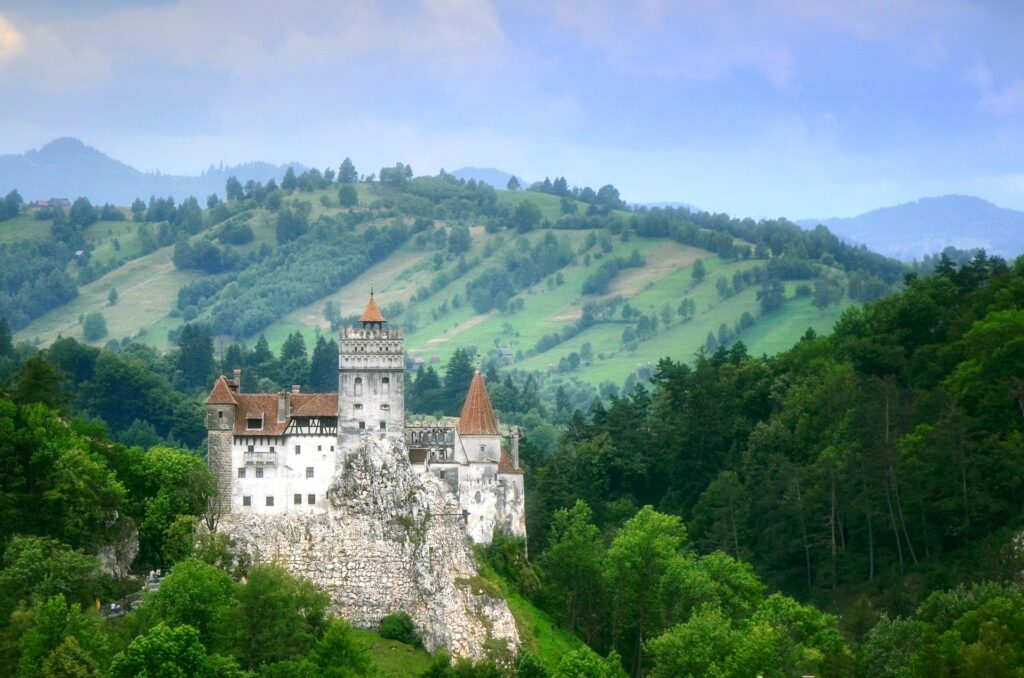Perched on a rocky hill in the picturesque region of Transylvania, Bran Castle stands as an enduring symbol of both mystery and allure. Often associated with the infamous Dracula, this captivating fortress has captured the imagination of travelers from around the world. In this article, we embark on a journey to explore the legends, history, and mysteries that shroud Bran Castle, delving into its rich past and uncovering the truth behind the myth.

A Castle of Legends
Bran Castle’s association with Bram Stoker’s novel “Dracula” has cemented its reputation as the home of the vampire count. However, the truth is more intriguing. The castle served as a strategic fortress for the defense of Transylvania, guarding the mountain pass and connecting the historical regions of Wallachia and Transylvania.
History and Architecture
Dating back to the 14th century, Bran Castle was initially a wooden fortress constructed by the Teutonic Knights. Over the centuries, it underwent multiple renovations and expansions, transforming into the imposing Gothic-Renaissance structure we see today. Discover the architectural marvels and defensive features that were designed to protect against invaders.
Vlad the Impaler and the Dracula Connection
While the historical figure Vlad the Impaler, also known as Vlad Dracula, had connections to the region, there is no direct evidence that he resided in Bran Castle. Nevertheless, the castle’s association with his name has contributed to its mystique and allure.
A Royal Residence
Bran Castle became a royal residence in the 20th century when it was gifted to Queen Marie of Romania. The beloved queen used her artistic talents to transform the castle into a charming royal dwelling. Visitors can explore the rooms and admire the queen’s personal effects on display.
The Enigmatic Tunnels and Secret Passages
Legend has it that Bran Castle harbors a network of hidden tunnels and secret passages. While some passages have been discovered and are open to the public, others remain elusive, adding an air of mystery to the castle’s already enchanting atmosphere.
The Castle’s Role in Romanian History
Throughout its existence, Bran Castle has played a significant role in Romanian history. It served as a customs point, a military stronghold, and a symbol of regional identity. Learn about the various historical events that have shaped the castle’s destiny.
Dracula’s Legend and Tourism
Despite the lack of historical evidence linking Bran Castle directly to the fictional Dracula, the castle has embraced its association with the vampire count, and this has significantly contributed to its popularity as a tourist destination. Discover how tourism has grown around the Dracula myth and its impact on the region.
The Spectacular Surroundings
Beyond the castle’s walls, visitors can enjoy the scenic beauty of Transylvania. The breathtaking landscapes of the Carpathian Mountains and nearby picturesque villages add to the charm of the region, making it a destination not to be missed.
Conclusion
Bran Castle, an enigmatic and iconic landmark, remains a symbol of Romania’s rich history and its captivating folklore. While its connection to the Dracula legend is more fiction than fact, the allure of this medieval fortress continues to draw visitors seeking to immerse themselves in the mysteries and legends that surround it. Whether you are a history enthusiast, an admirer of Gothic architecture, or simply intrigued by the myth of Dracula, a visit to Bran Castle promises an unforgettable experience, filled with intrigue, wonder, and a journey through the ages.